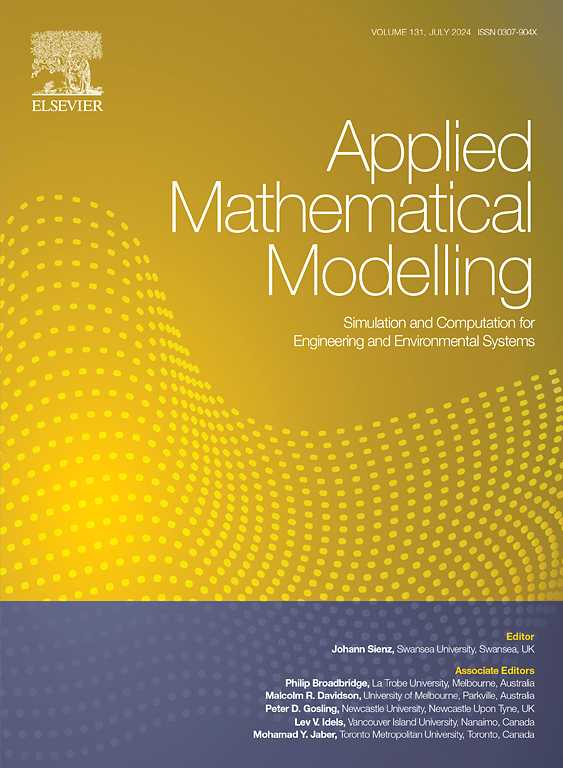A semi-analytical dosimetry model for inspiratory flow of reactive gases in the lung
IF 4.4
2区 工程技术
Q1 ENGINEERING, MULTIDISCIPLINARY
引用次数: 0
Abstract
A semi-analytical dosimetry model for steady flow and mass transfer in cylindrical tubes is developed for reactive gas transport and uptake in proximal airways of the lung during quasi-steady inspiratory flow. The model is used to predict the longitudinal concentration distribution of inhaled ozone along selected airway pathways in the lung of a two-month-old rhesus monkey. Two ideal airway structures are considered; a symmetrically-branched model based on computer tomography (CT) scan measurements and an asymmetric one informed by airway measurements from magnetic resonance imaging (MRI) data. The model is validated by comparison with predictions of computational fluid dynamics (CFD) simulations of ozone transport and uptake in an anatomically-accurate airway structure reconstructed from MRI data. The relative error between the CFD results and model predictions for the asymmetrically-branched airway structure is less than 1.5% along all airway paths, rendering the dosimetry model a computationally efficient tool for capturing longitudinal variations of reactive species concentration within the lung airways.

求助全文
约1分钟内获得全文
求助全文
来源期刊

Applied Mathematical Modelling
数学-工程:综合
CiteScore
9.80
自引率
8.00%
发文量
508
审稿时长
43 days
期刊介绍:
Applied Mathematical Modelling focuses on research related to the mathematical modelling of engineering and environmental processes, manufacturing, and industrial systems. A significant emerging area of research activity involves multiphysics processes, and contributions in this area are particularly encouraged.
This influential publication covers a wide spectrum of subjects including heat transfer, fluid mechanics, CFD, and transport phenomena; solid mechanics and mechanics of metals; electromagnets and MHD; reliability modelling and system optimization; finite volume, finite element, and boundary element procedures; modelling of inventory, industrial, manufacturing and logistics systems for viable decision making; civil engineering systems and structures; mineral and energy resources; relevant software engineering issues associated with CAD and CAE; and materials and metallurgical engineering.
Applied Mathematical Modelling is primarily interested in papers developing increased insights into real-world problems through novel mathematical modelling, novel applications or a combination of these. Papers employing existing numerical techniques must demonstrate sufficient novelty in the solution of practical problems. Papers on fuzzy logic in decision-making or purely financial mathematics are normally not considered. Research on fractional differential equations, bifurcation, and numerical methods needs to include practical examples. Population dynamics must solve realistic scenarios. Papers in the area of logistics and business modelling should demonstrate meaningful managerial insight. Submissions with no real-world application will not be considered.
 求助内容:
求助内容: 应助结果提醒方式:
应助结果提醒方式:


